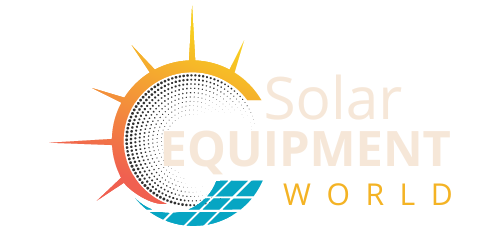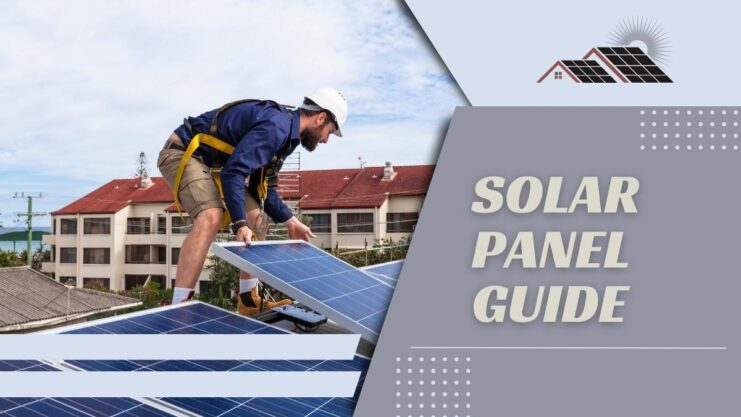Have you been considering adding solar panels to your home, but are confused about the size you need? You’re not alone.
This article provides an in-depth guide to help you find the best size for your needs. With our expert tips and advice, you’ll have all the information you need to make an informed decision.
What They Are and How They Work
Solar panels are photovoltaic cells that convert sunlight into electricity. They can be mounted on homes, businesses, and other structures, allowing electricity to be produced with little or no damage to the environment.
It consists of a frame and photovoltaic module that work with each other to capture, store and distribute solar energy. The module is composed of multiple interconnected photovoltaic cells which generate direct current when exposed to light. The modules are typically mounted on the roof or side of a structure and wired together in a series for maximum efficiency. An inverter converts this Direct Current (DC) power into Alternating Current (AC) power which can then be used by appliances, lights, or appliances in the home or business.
The size of a solar panel is determined by its wattage, or how much power it produces under ideal conditions – usually measured in standard test conditions (STC), which equals 1kW/m2 of sunlight being available with an ambient temperature of 25 degrees Celsius/77 degrees Fahrenheit and wind speed at 1 m/s (about 2.2 mph). As such, larger solar panels can produce more electricity but also require more mounting space for installation; in return, they offer higher efficiency ratings due to more exposure to sunlight and fewer rounding-off losses from pairing multiple smaller ones together for larger projects. By considering the size, space restrictions, and amount of watts needed for your project you’ll be able to better determine what solar panel size would work best for your project needs.
Factors to Consider When Choosing a Solar Panel Size: Energy Needs, Budget, and Space
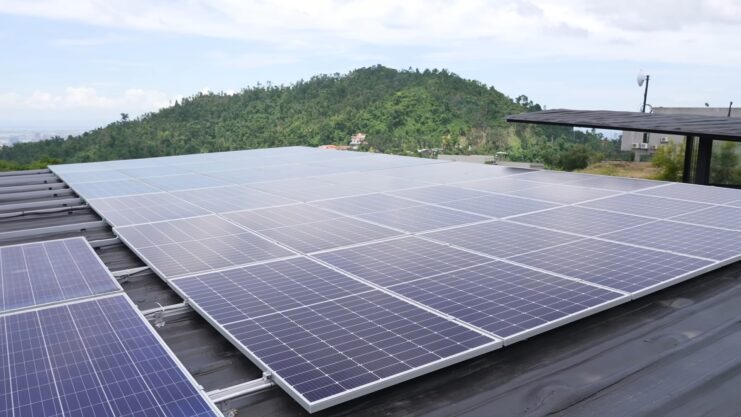
When selecting the right size for your installation, it is important to consider your daily energy needs, budgetary constraints, and the amount of space available.
- Energy Needs: The size of the solar panel you’ll need depends on how much energy you plan to generate. If you want to meet all of your energy needs, then a larger solar panel is recommended. Consider what device you’ll power and how much power they separately require. For instance, a household of four may need around 20-30 kWh/day while a single individual may require 5-10 kWh/day to meet their needs.
- Budget: A bigger size will cost more upfront but will provide higher efficiency and greater savings in the long run compared to installing many smaller ones. Make sure to do some research and get quotes for different sizes before deciding, as the cost per watt can vary significantly based on your selected retailer or installer.
- Space Available: It is important to consider how much space is available in your chosen location before making a decision about which size is best for you. Make sure that there will be adequate sunlight for optimal performance; take note of any obstructions like trees or nearby buildings that may interfere with the effectiveness of your array over time. In addition, if there are aesthetic considerations such as houses overlooking where the panels will be installed then get permission from relevant authorities before installing them so as not to contravene any by-laws or regulations that might be applicable in this regard.
Understanding Solar Panel Wattage and Efficiency Ratings
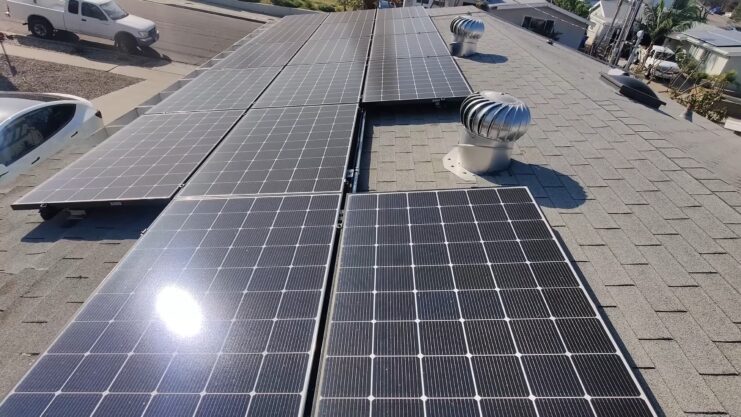
Its power output is measured in terms of watts, and it is one of the most important factors you must consider when choosing a solar panel for your home or business. Solar panels are rated according to the amount of energy they can generate, or their wattage. The wattage rating also indicates how efficient a solar panel is at generating electricity when exposed to sunlight. To get an idea of the overall performance of a particular solar panel, you should look at both its wattage rating and efficiency rating.
Wattage ratings range from as little as 10 watts (W) up to 700 W or more. In general, higher-wattage panels produce more energy than lower-wattage panels under the same conditions, but this isn’t always the case—efficiency plays a key role when comparing two different ones with different wattages. Efficiency ratings typically range from 15 – 22%. This means that for every hour placed in direct sunlight, 15-22% of its potential energy will be converted into usable electricity for your home or business. Higher-efficiency ones are more expensive but can help reduce your electric bills over time if you have limited space available for installation.
You should also factor in other variables such as temperature and location when choosing an appropriate size for your photovoltaic (PV) system. For instance, installing many smaller low-wattage solar panels may offer greater performance in warm climates because the heat from direct exposure will not easily accumulate within each individual panel’s structure more compared to larger PV modules thus leading to improved performance over time. On the other hand, higher-wattage modules may perform better under colder weather conditions. Ultimately deciding on which size suits best depends on multiple factors related to climate and installation location: make sure to choose accordingly!
Choosing the Best Solar Panel Size for Residential Homes: Tips and Recommendations
When selecting the best size for your residential home, there are many factors to consider such as location, budget, energy usage, and roof size. The size will determine the amount of electricity produced. You want to make sure that you get enough electricity to meet your daily needs without oversizing and taking up more roof space than necessary.
The first step is determining how much energy you consume on a regular basis and making sure that the proposed system will meet this need. Next, you should do a proper analysis of your roof space and make sure there is enough area available for the selected system’s configuration and installation method. Location is another factor to take into consideration; sun exposure determines how efficient solar panels are in converting sunlight into electricity. After taking all these factors into consideration, you can choose the right size for your Solar Panel system based on estimated productivity per panel type and cost of installation.
The standard sizes for them vary depending on what technology they use – crystalline or thin-film modules – which have different sizes available for purchase: 18V – 250W (7×3 ft.), 21V – 310W (5×5 ft) or 24V – 370W (5×6 ft). For thin-film modules, typical sizes range from 12V – 180W (4×4 ft.) to 18V – 230W (4 × 5 ft.). In addition to these standard options, modular systems are also available as well where several smaller ones can be wired together in order to align with your specific power needs without needing additional expansion infrastructure.
It’s important to remember that despite claims at higher efficiency rates; higher power outputs require larger panels that may not be able to fit in limited roof spaces or are compatible with local regulations. Ultimately it’s best practice to purchase equipment based on the recommendation of a qualified installer who considers all relevant factors before making any decisions about installing a solar panel system in a residential home setting.
How to Calculate the Ideal Solar Panel Size for Your Home
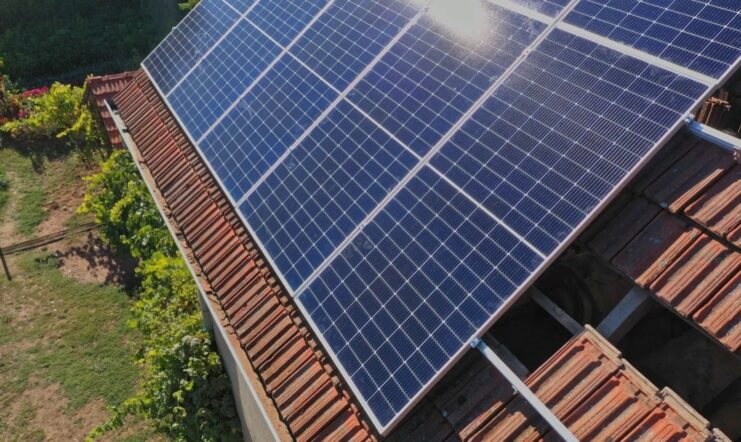
Calculating the ideal size of a solar panel for your home can be tricky, as it depends on a number of factors, such as the energy output required and the size and slope of your roof. The cost is also important; larger panels are more expensive than small ones. Fortunately, you can use a few simple equations and measurements to determine the best size for your home.
To calculate the optimal wattage for a house, you need to know how many kilowatt-hours (kWh) you consume every month in electricity bills. This figure should be available from your power company or utility provider. Multiply this number by 1,000 and divide it by 30 to determine how many watts per day your home needs on average. For example: if you consume 12 kWh per month, you will require 400 W/day (12000/30).
Now that you know your needed wattage level, it’s time to measure the surface area of available roof space for solar panels and decide what type of panels to install. Generally speaking, monocrystalline panels are more efficient than their polycrystalline counterparts – however, both types offer great efficiency rates these days so this decision really depends on budget constraints and visual preferences.
Once these two steps are complete, divide the daily wattage requirement from Step One by estimated panel efficiency ratings from Step Two – usually 0.2-0.3 MW/m2 – in order to determine how large an area is required for each panel installation job; i e if 0 .2 MW/ m2 is used then 2000 m2 /mW = 200 m2 for 10 kW or 20 kW(10 x 200= 2000). This will give you an estimate of how much space each solar panel requires in order to produce sufficient energy for your specific requirements (e g 10 kW). Finally multiply the number of square meters by 10 once again in order to estimate the total cost (e g 10 x 200 = 2000) This process should help you understand what kind and size solar panel setup is right for your home’s needs!
The Benefits of Installing Oversized Solar Panels: Is Bigger Always Better?
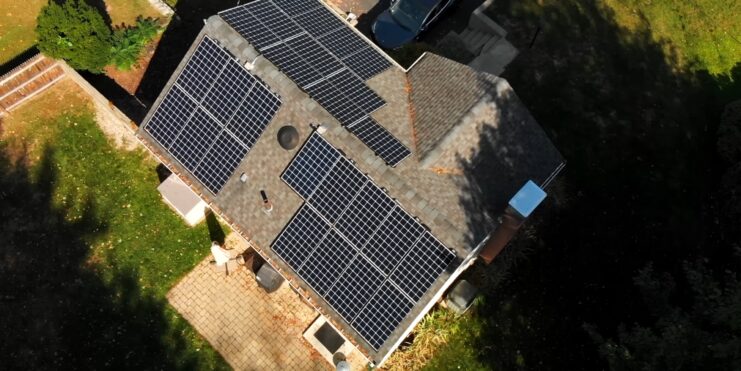
As this technology has become increasingly advanced and more widely available, many people are asking the same question: is bigger and better always the way to go when it comes to solar panels? Here, we will go over the facts and help you decide if oversized solar panels might be right for you.
They provide more than just higher energy outputs; they can also reduce installation costs. Oversized solar panels are larger in size and therefore require fewer panels to cover a certain area. This results in fewer points of failure during installation, as well as a vastly reduced labor cost when there are fewer modules that need to be installed. The extra size of these panels also helps them absorb more light even when partial shade covers some of the surface areas—this means that larger-sized solar modules generate more energy, even on less-than-ideal days with less sun exposure.
These oversized modules don’t come without their drawbacks, however. The cost per watt is often higher for larger-sized modules due to an increased unit cost, which can partially offset their associated cost savings from reduced installation labor. Additionally, larger cells consume a higher amount of space in order to capture the same amount of sunlight as five or six smaller-sized panels would offer—so this could be an issue if space limitations make it impossible or impractical for you to install them in the first place.
Overall, before making your decision about whether or not oversized solar modules are right for your particular situation, take into account your budget guidance as well as space constraints and any other requirements you may have regarding avoiding harm to your property or installing major structures that may involve heavy machinery operations and additional work permits issued by local authorities. Additionally, consider whether these large-sized cells will passively operate all year long compared with their smaller counterparts—including their extreme temperatures operation capabilities throughout winter months & summers in order to provide reliable performance all year round – under any given climatic condition on any location/geography on Earth!
Solar Panel Size for Commercial Properties: How to Determine the Ideal Size
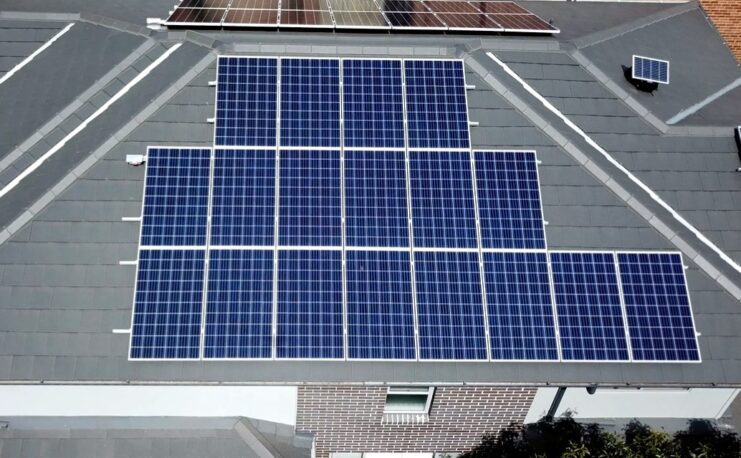
When selecting the ideal size for a commercial property, there are several important factors to consider. The most important factor is the amount of energy that the property needs in order to run efficiently and meet its electricity requirements. To determine this, it is necessary to calculate the average daily electrical load of your business. Another important factor to consider is how much space is available to place the solar panels. This can help you determine what type of equipment you need and also how many panels you need in order to generate enough electricity from your location.
The size of a solar system directly corresponds with its cost, efficiency, and energy output. A smaller system requires fewer solar panels which results in lower installation costs but can also have an effect on energy output. Thus, it’s essential that the correct balance between cost and efficiency be established when determining the size of the system for each commercial property.
When selecting a solar panel system for a commercial property, there are usually 5 different sizes from which to choose: 5 kW (kilowatts) systems, 10 kW systems, 20 kW systems, 30 kW systems, and 50+ kW systems. The majority of residential properties tend to favor 10kW or smaller-sized installations while commercial properties tend to use larger-scale systems due to their higher energy requirements and often more available space than residential properties have available. A good rule of thumb when selecting solar panel size for any location is it’s better slightly larger than risk too small as smaller systems result in less performance overall.
Additionally, depending on your region’s climate conditions there may be specific panel sizes more suitable than others due to optimal sunlight exposure throughout different seasons due to shadows from buildings or terrain such as hills and mountains that could alter the amount or time period during which direct sunlight is received throughout certain time periods at certain locations/elevations at specific times/angles throughout each day or year respectively; consult with an expert about local resources if necessary as part of comprehensive climate and geographical research.
How to Combine Different Solar Panel Sizes for Maximum Efficiency
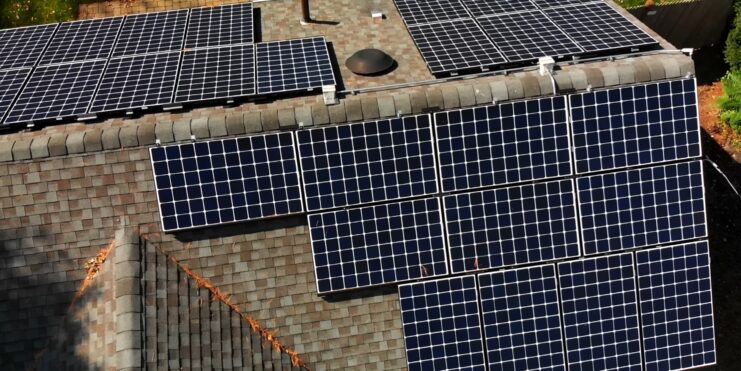
Depending on your home or business requirements, you may find that the best way to maximize solar energy efficiency is to combine different sizes of solar panels. Different wattages or sizes can be connected in parallel or in series, depending on the voltage and amperage of the circuit. Combining multiple configurations provides a balance between investment costs, installation complexity, and space efficiency when you’re looking for the most performance for your money.
Solar arrays often use a combination of module types, each of which offers its distinctive features and benefits. Here are some topics to consider when determining which size modules are best for your project:
- Space limitations: If your rooftop space is restricted, you may opt to install higher-wattage panels than if you had more room available. Larger modules generally require fewer components, which means fewer installation steps and greater capital efficiency. On the other hand, if you have plenty of space on your roof but are limited by budget constraints, smaller modules can offer an affordable alternative that may still fulfill part of your power needs.
- The wiring needs: The connection pattern chosen will affect how much wiring is required — sometimes larger modules require less wiring than smaller ones due to their simplified layout. It’s also worth considering what type of cables need to be used with each type — low-voltage wiring is generally more economical than high-voltage cabling for short runs.
- Operation issues: Some systems benefit from tracking tools such as optimizers that increase panel output by following the sun’s movement across the sky; however, these amplify system complexity and cost significantly. Think carefully about panel orientation (e.g., north/south axis) before specifying module availability as this impacts initial investment costs – system maintenance expenses should also be factored into consideration when selecting modules.
It can be tricky to work out what kind and how many different sizes of solar panels will produce the greatest overall efficiency — weighing up factors such as physical limitations with budgetary constraints in order to determine a cost-effective solution requires careful research! Ultimately though there are significant gains available by deploying an array featuring various operating capacities – provided it’s planned correctly!
The Future of Solar Panels: Trends and Innovations in Panel Size and Efficiency
Solar panels are constantly being improved upon in order to make them more efficient, lighter, and more cost-effective. In the past several years, there have been several new trends and innovations when it comes to solar panel size and efficiency.
The most notable developments are the use of thinner films, high-efficiency modules (HEMs), miniaturized solar cells, and alternative materials such as thin film copper indium gallium selenide (CIGS) that allow for larger panels with higher wattages even on small rooftops. There has also been an increasing focus on tandem cell technology, where two different types of solar cells are used to absorb a greater portion of the sun’s spectrum than would be achievable with a single cell alone.
Their manufacturers are making great strides towards higher energy efficiency by looking into multi-junction cells which contain multiple layers of photovoltaic materials in order to absorb more light energy from different parts of the solar spectrum. These advances lead to smaller-sized solar panels that produce just as much electricity as their larger counterparts.
In addition, researchers have explored ways to construct lightweight and flexible modules with bendable substrates that can be used in remote locations or mounted onto large vehicles or watercraft. Others have pursued cost-efficient building-integrated photovoltaic BIPV systems which can blend into existing buildings without impacting aesthetics or space allocation too much.
The future of solar looks exciting—with continual innovation and advancements within the current technologies; we will soon see more efficient and cheaper systems for residential applications and widespread adoption of clean energy sources worldwide!
FAQs
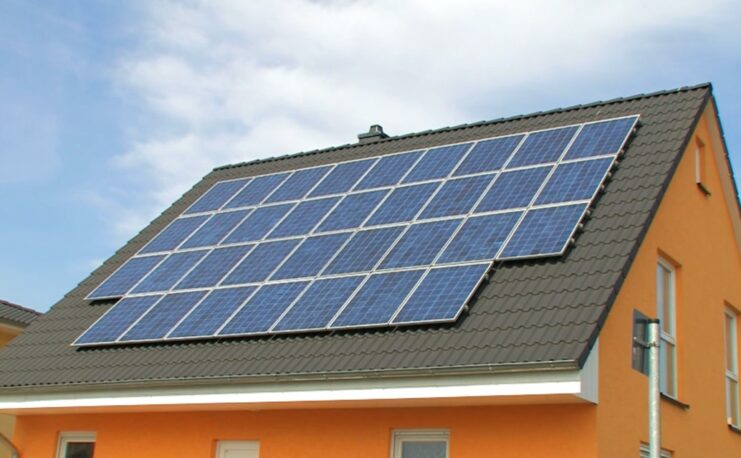
What is the difference between monocrystalline and polycrystalline solar panels?
Monocrystalline ones are made from a single silicon crystal, making them more efficient but also more expensive. Polycrystalline ones are made from multiple silicon crystals and are more affordable but less efficient.
Can solar panels work in cloudy weather?
Yes, they can still generate energy in cloudy weather, but their efficiency is reduced.
How long do solar panels last?
They can last up to 25-30 years or more, depending on their quality and maintenance.
How much does a solar panel cost?
The cost of it varies depending on its size, type, and manufacturer. On average, it can cost between $200 to $400.
Can I install solar panels myself?
It is not recommended to install them yourself unless you have experience in electrical work and are familiar with local building codes. It is best to hire a professional installer to ensure a safe and efficient installation.
Do I need batteries with solar panels?
You do not necessarily need batteries with them, as you can still use electricity from the grid when the sun is not shining. However, batteries can provide backup power and increase energy independence.
Can solar panels increase the value of my home?
Yes, installing them can increase the value of your home, as they are seen as a desirable and sustainable feature.
Are there any government incentives for installing solar panels?
Yes, many governments offer incentives for installing them, such as tax credits and rebates.
Can I use solar panels in a rental property?
Yes, they can be installed on a rental property, but you may need to negotiate with your landlord or include the cost in the rental agreement.
Can I take my solar panels with me if I move?
Yes, you can take them with you if you move, but you will need to pay for their removal and reinstallation at the new location.
Conclusion
In conclusion, choosing the right size of the solar panel is crucial for a successful and efficient solar energy system. It is important to consider factors such as energy consumption, location, and available roof or ground space. By following the guidelines provided in this guide and consulting with a professional, homeowners can make informed decisions on which solar panel size is best suited for their individual needs. Whether it’s a small system for residential use or a larger one for commercial purposes, investing in solar energy can have long-term benefits for the environment and for saving on electricity costs. By taking the time to research and evaluate the options, homeowners can ensure that they are making the most out of their solar energy investment.
